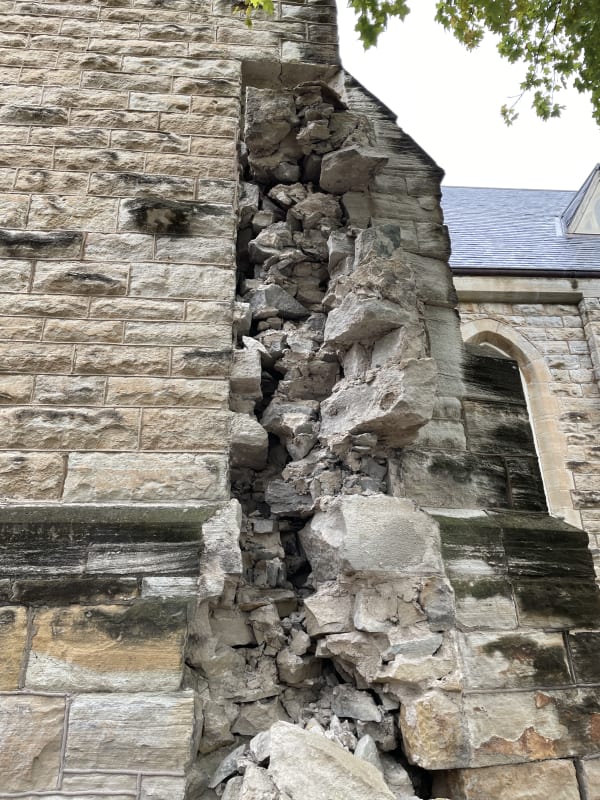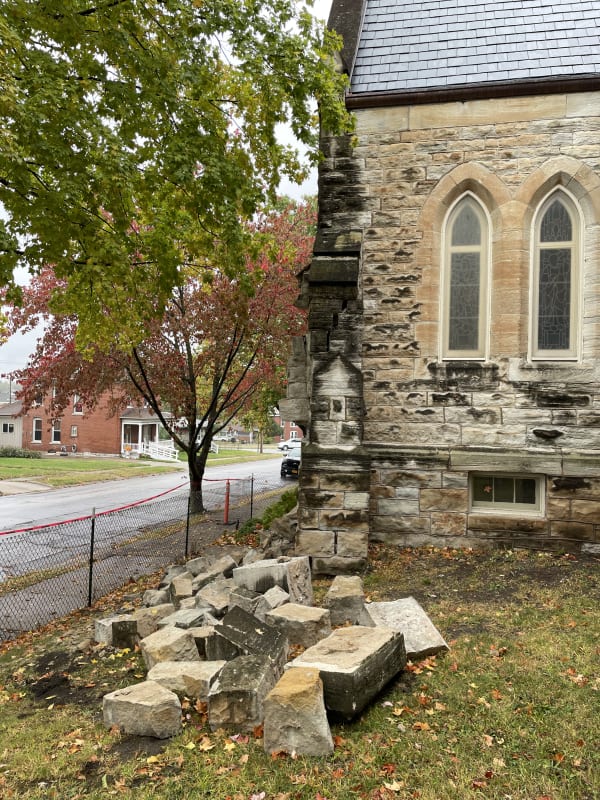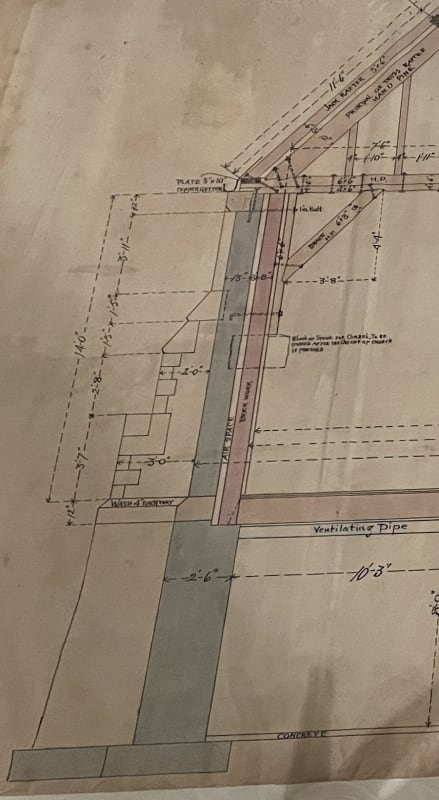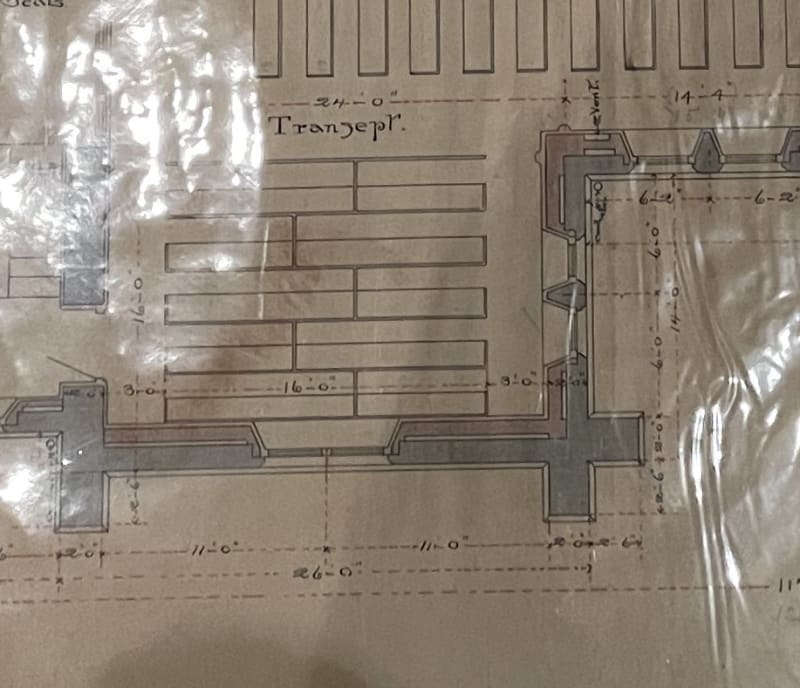Currently have a repair project where a late 19th century stone buttress took on a car and lost.


I was amazed they still had the original drawings.

There is a plaster crack in the corner on the interior, otherwise no other damage observed on the first floor or in the basement. The perpendicular buttress has been rotated with about a 1" gap on the backside where it meets the building wall.
As you can see, the interior of the stone wall is a jumble of partially mortared rubble and the limestone was drystacked. The two buttresses at the corner will need to be rebuilt.

The question I have is do we rebuild with rubble, keeping in the style of the original construction and in doing that fully grout the cavity so we can establish interlock with some tie stones from the limestone? When fully grouting the cavity we would need to dam up the voids behind to prevent it from filling the whole wall and take into consideration some additional deadload on the foundation. There isn't really much for tie stones currently, it appears a large majority of the stone was just butted up to the buttress from the wall.
Or, do we have the contractor drystack the limestone exterior utilizing tie stones, then grout the cavity behind, not worrying about trying to fill it with rubble? (Still blocking off the existing voids in the wall to prevent filling the whole wall.)
Thoughts? I'm not finding much for resources for repairs of this type. TIA


I was amazed they still had the original drawings.

There is a plaster crack in the corner on the interior, otherwise no other damage observed on the first floor or in the basement. The perpendicular buttress has been rotated with about a 1" gap on the backside where it meets the building wall.
As you can see, the interior of the stone wall is a jumble of partially mortared rubble and the limestone was drystacked. The two buttresses at the corner will need to be rebuilt.

The question I have is do we rebuild with rubble, keeping in the style of the original construction and in doing that fully grout the cavity so we can establish interlock with some tie stones from the limestone? When fully grouting the cavity we would need to dam up the voids behind to prevent it from filling the whole wall and take into consideration some additional deadload on the foundation. There isn't really much for tie stones currently, it appears a large majority of the stone was just butted up to the buttress from the wall.
Or, do we have the contractor drystack the limestone exterior utilizing tie stones, then grout the cavity behind, not worrying about trying to fill it with rubble? (Still blocking off the existing voids in the wall to prevent filling the whole wall.)
Thoughts? I'm not finding much for resources for repairs of this type. TIA
